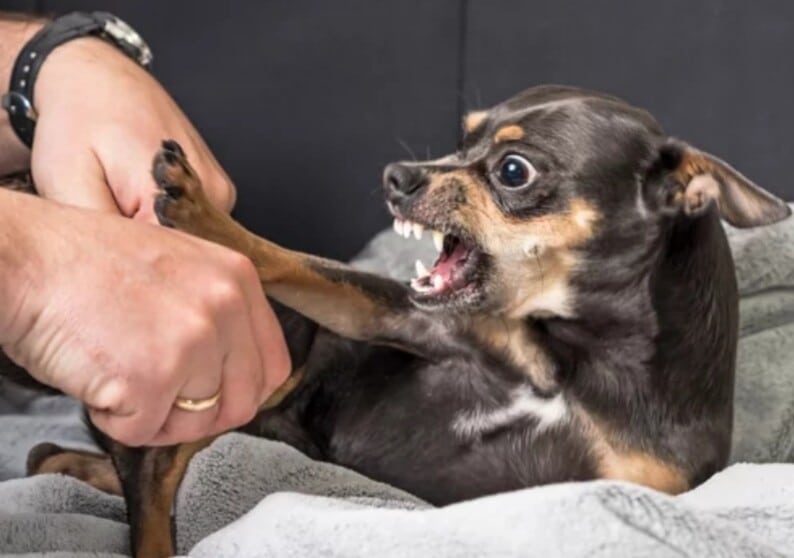We always assume that every dog is friendly. This is certainly true but it doesn’t mean that a friendly dog is never going to bite. In fact, this is a big reason why many dog owners get pet insurance because you never know when a dog may decide to bite somebody. When you do end up getting bit by a dog it is quite a traumatic event.
It’s possible that the dog could even be euthanized because of the bite depending on the circumstances. This means that a dog bite is not to be taken lightly. There are a lot of outcomes that could be serious although many times it isn’t too bad. The key is knowing what to do after a bite. In this article, we will go over several of the steps to take if you’ve been bitten by a dog.
1. Check the wound
A dog bite that pierces the skin is going to hurt quite a bit. A dog’s teeth are very sharp and they have a lot of strength in their jaw. The force of the bite alone is very painful and then when you add in the fact that skin and tissue are broken it takes it to another level.
You have to take a moment after it happens to assess what type of wound you have. You may have a superficial wound in which the skin is broken but the tissue underneath isn’t. It may be bleeding a bit or it may not. In this scenario, you’re probably going to be fine by just going home and disinfecting the wound with some Medihoney. Once it is disinfected and bandaged you will likely be fine.
When there is more damage than that you will need to think quickly. If there is a puncture wound then it can bleed quite a bit. It’s important to find something that you can use to stop the bleeding by applying pressure. A cloth or shirt will generally do the trick. Let it bleed for a few seconds so it can flush any bacteria out of the wound and then apply pressure.
If you have a puncture wound, then you will need to get to a doctor as soon as possible since you may need stitches.
2. Get the owner’s information
If the owner was there when this happened then they are responsible so you will need to make sure to get their information. You’ll need to be able to contact them so they can pay for any expenses that you incur as a result of the bite. They will also need to be spoken to by animal control or even the police. This event will need to be investigated so the owner will be visited to find out if the dog is a problem or if this was an isolated incident.
Hopefully, the owner is a reasonable person and wants to make sure that everybody is ok. Unfortunately, there may be one that decides to get away and not deal with the situation. In this case, try to get the attention of a police officer and give them a description so they can find the person.
If you don’t get their information then you won’t have a chance for the situation to get resolved. It may be the case that you need to sue the owner for damages which won’t be possible if you don’t know who they are.
3. Risk of rabies
Rabies is something that not many people think too much about. It is a deadly disease, however, if it goes untreated. Most dogs won’t have rabies so it is unlikely that it is a problem. However, if there is no owner around or it is a stray dog then you can’t really be sure.
In fact, it may be the reason that you got bit in the first place. If the attack was unprovoked it could be because the dog is rabid as they tend to get aggressive when it becomes bad.
If you suspect the dog is rabid, call animal control right away and give them a description so they can follow up. It is very important to get the dog off of the streets as soon as possible so it doesn’t cause any more damage.
Get to the emergency room right away so you can have a doctor take a look. They may need to give you a shot to be sure since untreated rabies is fatal.

Isreal olabanji a dental assistant and public health professionals and has years of experience in assisting the dentist with all sorts of dental issues.
We regularly post timely and trustworthy medical information and news on Fitness, Dental care, Recipes, Child health, obstetrics, and more.
The content is intended to augment, not replace, information provided by your clinician. It is not intended nor implied to be a substitute for professional medical advice. Reading this information does not create or replace a doctor-patient relationship or consultation. If required, please contact your doctor or other health care provider to assist you to interpret any of this information, or in applying the information to your individual needs.


